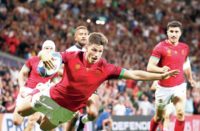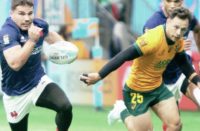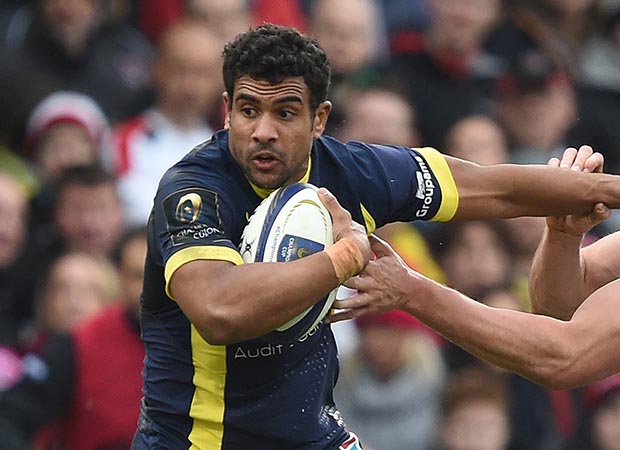 It possibly won't surprise you that Clermont – who took 99 years to land their first French Championship and who are almost defined by their dogged pursuit of a first European Cup – is where the Crusades all started. No seriously.
It possibly won't surprise you that Clermont – who took 99 years to land their first French Championship and who are almost defined by their dogged pursuit of a first European Cup – is where the Crusades all started. No seriously.
For Clermont this crusade business began back in 1095 after a famous call to arms by Pope Urban ll in the city's cathedral after which the forces of Christendom soon gathered at Clermont and marched off to the Middle East in an attempt to free Jerusalem from Muslim domination.
Those who didn't agree with such a course of action went off in a huff and formed the neighbouring city of Montferrand which, of course, is one of the former names of the modern day rugby team, indeed the banner under which they first started competing in Europe. The two cities were officially reunited in 1731 but only really merged again in the 20th century when Michelin became the chief source of employment for both communities.
Anyway, we digress. Back to the Crusaders from Clermont. Countless campaigns followed before they finally called it a day in 1272. The endless, remorseless, patient and uncompromising pursuit of an objective is seemingly in Clermont's DNA although achieving the objective can take a while. The journey is clearly as important as the destination, the struggle as rewarding as the prize. Which is just as well given the history of the rugby team.
When you look at the map of France there is a huge amount working against Clermont which is situated slap bang in the middle of nowhere up in the Massif Central. It's a five or six hour drive from the fiery rugby hotbeds of the south – the Catalans and Basques and the big city beasts Toulouse – and even further from the likes of Montpellier, Toulon and those fellow mega bucks clubs in the north, Stade and Racing.
La Rochelle is a best part of a day's drive due west and the only matches that could remotely be considered local derbies are Brive and Lyon. Which is roughly the same as calling Newcastle v Leicester or Sale against Gloucester a derby.
Clermont has always been a rugby outpost, which has sentenced them to a life on the road and we know how much French rugby teams enjoy travelling. For most of their history they were the archetypal French side. Incredibly strong and combative at Clermont – where cold winters and scorching autumns and springs accentuate home advantage – but very fallible away from home.
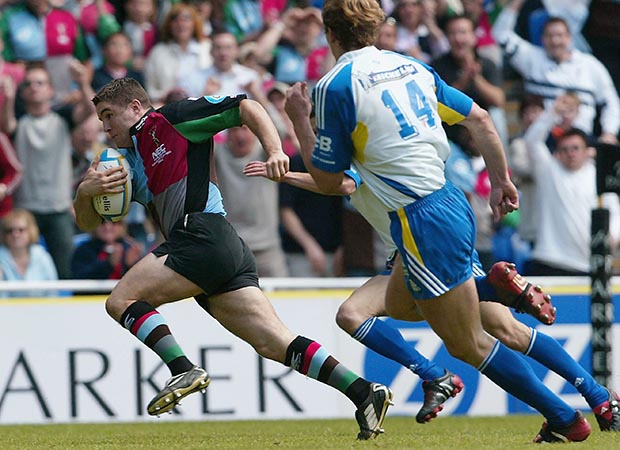 As befits a club that spend so much time travelling their first and enduring benefactor was – and remains – the giant wheel manufacturing company Michelin which sprung up in the city. Marcel Michelin, son off the company founder Andre, was a committed rugby man and, with the company employing 30,000 local workers at the height of its prosperity, sponsoring the local team was logical enough.
As befits a club that spend so much time travelling their first and enduring benefactor was – and remains – the giant wheel manufacturing company Michelin which sprung up in the city. Marcel Michelin, son off the company founder Andre, was a committed rugby man and, with the company employing 30,000 local workers at the height of its prosperity, sponsoring the local team was logical enough.
Originally, they were called AS Michelin although in 1922 even the French Federation drew the line at such blatant corporate advertising and insisted they change to
As Montferrand the company has spread its wings in recent years and although Clermont remains its administrative headquarters it's no longer a huge centre of production. The financial assistance, however, remains considerable and along with the local Auvergne authorities underpinned the rebuilding of the Parc des Sports Michel Michelin over the last decade.
As AS Montferrand they contested nine French Cup finals, all of them unsuccessful, starting in 1936 and 1937 with back to back finals in Toulouse against RC Narbonne and CS Vienna. At the end of World War ll in 1945 they lost 14-13 to SU Agen and two years later went down 14-11 to Toulouse and there followed a long fallow period before the club started to regenerate again in the 70s when there were losing finals against La Voulte Sportif and Beziers.
The 80s were a complete desert, tough times for a struggling club and indeed the area generally. The Tour de France even stopped visiting the nearby volcano climb Puy de Dome which suddenly fell out of favour as more spectacular and lucrative destinations were discovered in the Alps and Pyrenees.
The world famous F1 Circuit de Charade – a spectacular course winding around the lower slope of the Puy de Dome – was also dropped from the F1 schedule after being considered too dangerous. Eventually it closed in 1988 and there was a time when the locals wondered if the rugby club might disappear from the top flight as well.
But the crusade continued, the car industry experienced boom times, Michelin put yet more money in and the club started breathing fire again throughout most of the 90s and all of the noughties. There were four losing Top 14 finals against Toulouse and the bitter taste of disappointment against Stade Francais in 2007 by which time they had morphed into Clermont Auvergne. Perpignan also proved party poopers at yet another Paris final. The Stade de France became a graveyard to their hopes and ambitions but finally – in a dour and anti-climactic final – they reached the Promised Land with a scruffy 19-6 win over Perpignan in 2010. Exhaustion was possibly the overriding emotion.
Clermont were finally champions of France although you might ask what took them so long. Sitting alongside them on the roll of honour with one title are such household names as US Quillan, Olympique de Pantin, CS Vienne, La Voulte and US Carmaux. With all due respect to all concerned Clermont are rather better than that.
While pursuing the French title Clermont had simultaneously been dipping their toe into European competition in the Challenge Cup, taking the tournament seriously unlike one or two of their French colleagues. Twice they won the second tier competition, in 1999 and 2007, while their 2004 final against Quins at the Madejski was a minor classic which Quins nicked 27-26. All good miles on the clock though and decent preparation for a serous assault on the European Cup proper.
After their domestic triumph in 2010 Clermont were off the leash and free to give Europe their best shot. It was time for another crusade. The following season they failed to progress in a ridiculously loaded pool that included Saracens, Ospreys and Leinster and they fell narrowly in the quarter-finals at Leinster the following year, but since then they have reached the semi-finals or better in five of the last six seasons. A massive momentum is building and if they were lining up against any other club than Saracens you would make them favourites.
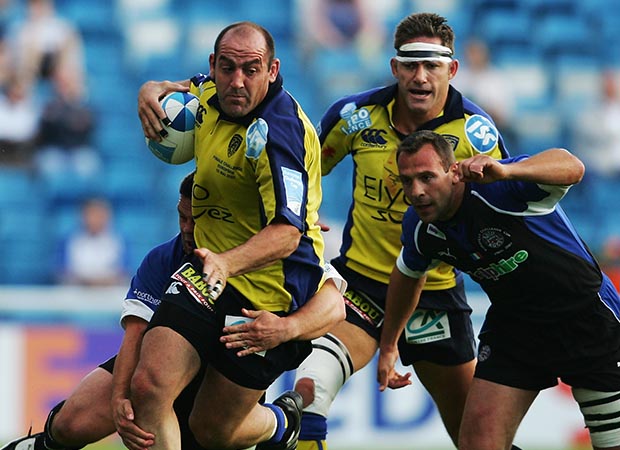 They have made their mark in their own distinctive style. Although reports of exact annual budgets in France are not wholly reliable, Clermont consistently bat in the top four with amounts varying between €25-29m. They are certainly no paupers but they don't splash the cash recklessly.
They have made their mark in their own distinctive style. Although reports of exact annual budgets in France are not wholly reliable, Clermont consistently bat in the top four with amounts varying between €25-29m. They are certainly no paupers but they don't splash the cash recklessly.
Yes, they invest heavily in their Espoirs team and have a well-publicised presence in Fiji spotting potential recruits and they have undoubtedly used the cheque book over the years to ward off approaches for homegrown stars like Wesley Fofana, Thomas Domingo and Aurilien Rougerie while keeping Morgan Parra at the club has probably come at a price.
But one of their greatest assets has always been canny player ID and picking up bargains. For decades now Clermont have mined a rich seam of relatively cheap – at least when they first signed as relative unknowns – talent from Georgia and Argentina. The likes of the ageless Davit Zirakashvili, Goderdzi Shvelidze, Viktor Kolelishvili, Mario Ledesmam, above, left, Gonzalo Longo and Martin Scelzo.
Clermont recognised very early on what a force of nature unheralded Canadian lock Jamie Cudmore could become and also spotted a huge schoolboy wing playing for Fiji at the Junior World Cup at their own ground in Clermont and wasted no time in signing Napolioni Nalaga for a snip.
Historically Clermont have also been brilliant in spotting slightly frustrated, disaffected players who have either been cast into the international wilderness or thwarted in their efforts to play regular Test rugby. Again such players tend not to demand top dollar. Brock James, Alex King, Richard Cockerill and the uber combative South African flanker Gerhard Vosloo immediately come to mind while of the current squad David Strettle, Nick Abendanon and Fritz Lee come under that heading.
Barnstorming centre Remi Lamerat never got the recognition he deserved at Castres and has been an angry man on a mission since moving to the Auvergne while Clermont also pounced for Sitiveni Sivivatu when the All Black missed out on selection for the 2011 World Cup. Clermont specialise in identifying hungry players with a point to prove.
Whether the class of 2017 can finally deliver the European Cup remains to be seen. Saracens are favourites but Clermont are one of the few sides you would venture any money on beating the reigning champions. One thing is for sure though, if Clermont fail the crusade will undoubtedly continue, fighting the good fight has become their raison d'etre.



